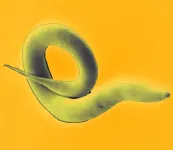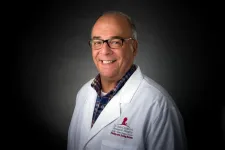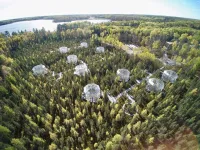(Press-News.org) Researchers from Pompeu Fabra University (Barcelona, Spain) have analysed the way citizen science is practised in Spain. The paper, produced by Carolina Llorente and Gema Revuelta, from UPF's Science, Communication and Society Studies Centre (CCS-UPF) and Mar Carrió, from the University's Health Sciences Educational Research Group (GRECS), has been published in the Journal of Science Communication (JCOM).
Based on the study, a series of recommendations have been put forward to improve how citizen participation in science is carried out. Firstly, they suggest efforts be stepped up regarding the training given for assessing these initiatives or the creation of multi-disciplinary teams with a broad range of knowledge areas to organise this kind of assessment. They also highlight the importance of keeping in mind the activities' reproducibility.
The aims of the study were to identify citizen science participants in Spain, define what role communication plays and analyse to what extent the key requirements for undertaking citizen science are integrated in its practice. This is the first time this aspect has been studied in Spain.
In this qualitative study researchers analysed 16 interviews with coordinators of science activities in which citizens participate, which included the active participation of individuals in different phases of a research project. This participation could consist in providing opinions, collaborating with data collection, interpreting results and/or evidence-based decision-making.
The results indicate a largely strategic participation of groups of people with traits that make them ideal for participating in certain projects (such as neighbours, patients, public administration staff, etc.). The authors also highlight captive audiences - those who participate in activities without having volunteered for them and who have no choice but to take part, such as school students, for example.
The researchers underline communication as a key tool for successful practice. Gema Revuelta explains that "efforts must be spent in the conceptualisation phase to identify the participants, the best strategies for ensuring their participation and the expected level of commitment for the project".
The selection of a strategic public is essential for an activity of this nature to work properly. Although most interviewees made reference to this, there are some who continue to view the public as a single entity. Carolina Llorente stresses that: "it makes no sense to identify the public as "general public" in this kind of activity. Efforts need to be made when designing the activity to identify which specific groups should participate".
They also analysed the level of integration of five essential key elements that form part of a citizen science activity: the findings, the level of participant contribution, participation assessment, the reproducibility of the activity and the training of the participants and facilitators. Of particular importance here is training in specific skills based on the level of citizen participation and the need to train the teams responsible for organising the activities.
Researcher Carolina Llorente explains that the resulting insight into how citizen science is being performed "gives us a starting point for proposing improvement strategies to incentivise this way of doing research".
INFORMATION:
This study was carried out with the support of the Spanish Foundation for Science and Technology (FECYT) and the Ministry of Science and Innovation.
Reference article:
C. Llorente, G. Revuelta, M. Carrió. Characteristics of Spanish citizen participation practices in science. Journal of Science Communication, June 2021. DOI:10.22323/2.20040205.
Using an exceptionally preserved fossil from South Africa, a particle accelerator, and high-powered x-rays, an international team including a University of Minnesota researcher has discovered that not all dinosaurs breathed in the same way. The findings give scientists more insight into how a major group of dinosaurs, including well-known creatures like the triceratops and stegosaurus, evolved.
The study is published in eLife, a peer-reviewed open access scientific journal for the biomedical and life sciences.
Not all animals use the same techniques and organs to breathe. Humans expand and contract their ...
Researchers have shown how worms learn to optimise their foraging activity by switching their response to pheromones in the environment, according to a report published today in eLife.
The findings are an important advance in the field of animal behaviour, providing new insights on how sensory cues are integrated to facilitate foraging and navigation.
Foraging food is one of the most critical yet challenging activities for animals, with food often patchily distributed and other animals trying to find and consume the same resources.
An important consideration is how long to stay and exploit a food patch before moving on to find another. Leaving incurs the cost ...
Synthetic biology offers a way to engineer cells to perform novel functions, such as glowing with fluorescent light when they detect a certain chemical. Usually, this is done by altering cells so they express genes that can be triggered by a certain input.
However, there is often a long lag time between an event such as detecting a molecule and the resulting output, because of the time required for cells to transcribe and translate the necessary genes. MIT synthetic biologists have now developed an alternative approach to designing such circuits, which relies exclusively ...
AMHERST, Mass. - City sprawl and road development is increasingly fragmenting the habitats that many plant and animal species need to survive. Ecologists have long known than sustainable development requires attention to ecological connectivity - the ability to keep plant and wildlife populations intact and healthy, typically by preserving large tracts of land or creating habitat corridors for animals. New research from the University of Massachusetts Amherst argues that it's not enough for ecological modelling to focus on the landscape. If we want the best-possible ecological management, we should consider ...
DURHAM, N.C. -- Plant-based meat substitutes taste and chew remarkably similar to real beef, and the 13 items listed on their nutrition labels - vitamins, fats and protein -- make them seem essentially equivalent.
But a Duke University research team's deeper examination of the nutritional content of plant-based meat alternatives, using a sophisticated tool of the science known as 'metabolomics,' shows they're as different as plants and animals.
Meat-substitute manufacturers have gone to great lengths to make the plant-based product as meaty as possible, including adding leghemoglobin, an iron-carrying molecule from soy, and red beet, ...
Terence D. Capellini has been interested in how joints work for almost three decades. Part of it is due to personal experience, having sustained several joint injuries as a college ice hockey player and recently developing knee osteoarthritis. But the principal investigator of Harvard's Developmental and Evolutionary Genetics Lab has also seen the pain and limited mobility of loved ones who've received similar diagnoses and injuries.
"We have all these joints in the body and they don't look the same from one another," said Capellini, the Richard B. Wolf Associate Professor in the Department of Human Evolutionary ...
Pediatric melanoma is a rare disease with only around 400 cases diagnosed in the United States every year. To better understand this disease and how best to treat it, St. Jude Children's Research Hospital scientists created a registry called Molecular Analysis of Childhood MELanocytic Tumors (MACMEL). A paper on findings from the registry was published today in Cancer.
"What is different about the MACMEL registry is that it is prospective," said corresponding author Alberto Pappo, M.D., St. Jude Solid Tumor Division director. "We're seeing the vast majority of enrolled patients as part of the melanoma clinic at St. Jude. We can follow these patients and conduct detailed pathology and molecular analysis."
More ...
University of California San Diego School of Medicine researchers have identified a possible link between inadequate exposure to ultraviolet-B (UVB) light from the sun and an increased risk of colorectal cancer, especially as people age.
Reporting in the journal BMC Public Health, researchers investigated global associations between levels of UVB light -- one of several types of ultraviolet light that reach the Earth's surface -- in 2017 and rates of colorectal cancer across several age groups in 186 countries in 2018.
Lower UVB exposure was significantly correlated with higher rates of colorectal ...
Manufacturing - Powered by nature
A team of researchers at Oak Ridge National Laboratory demonstrated the ability to additively manufacture power poles from bioderived and recycled materials, which could more quickly restore electricity after natural disasters.
Using the Big Area Additive Manufacturing system, the team 3D printed a 55-foot pole designed as a closed cylindrical structure. They evaluated three different composite materials with glass fibers including cellulose ester, recycled polycarbonate and bamboo fiber reinforced polystyrene.
"We developed a modular design that is easy to manufacture, transport and assemble," ORNL's Halil Tekinalp said. "Sections within the pole can ...
BOSTON - A skin pigmentation mechanism that can darken the color of human skin as a natural defense against ultraviolet (UV)-associated cancers has been discovered by scientists at Massachusetts General Hospital (MGH). Mediating the biological process is an enzyme, NNT, which plays a key role in the production of melanin (a pigment that protects the skin from harmful UV rays) and whose inhibition through a topical drug or ointment could potentially reduce the risk of skin cancers. The study was published online in Cell.
"Skin pigmentation and its regulation are critically important because pigments confer major protection against UV-related cancers ...



